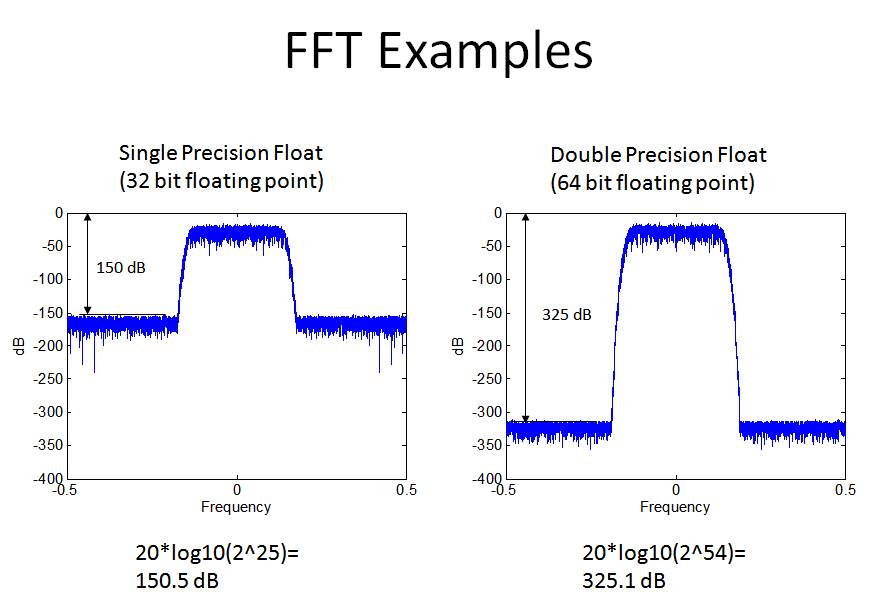What data path would have more simultaneous dynamic range: 32 bit fixed-point or 32 bit floating-point? Why?
To clarify "simultaneous dynamic range": This is the ability to discern strong and weak signals at the same time, while dynamic range is the total range between between the weakest signal (sensitivity to still meet a performance metric) and strongest signal (saturation or some other decrease in a performance metric such as 1 dB compression, clipping, etc). One example where we would be concerned with simultaneous dynamic range is in an FFT where we have both weak and strong tones simultaneously at two different frequencies and we want to be able to discern both in the same FFT result.
Our vision and hearing are good examples of the difference between simultaneous dynamic range and dynamic range: see https://en.wikipedia.org/wiki/Dynamic_range
Please preface your answer with spoiler notation by typing the following two characters first ">!"




